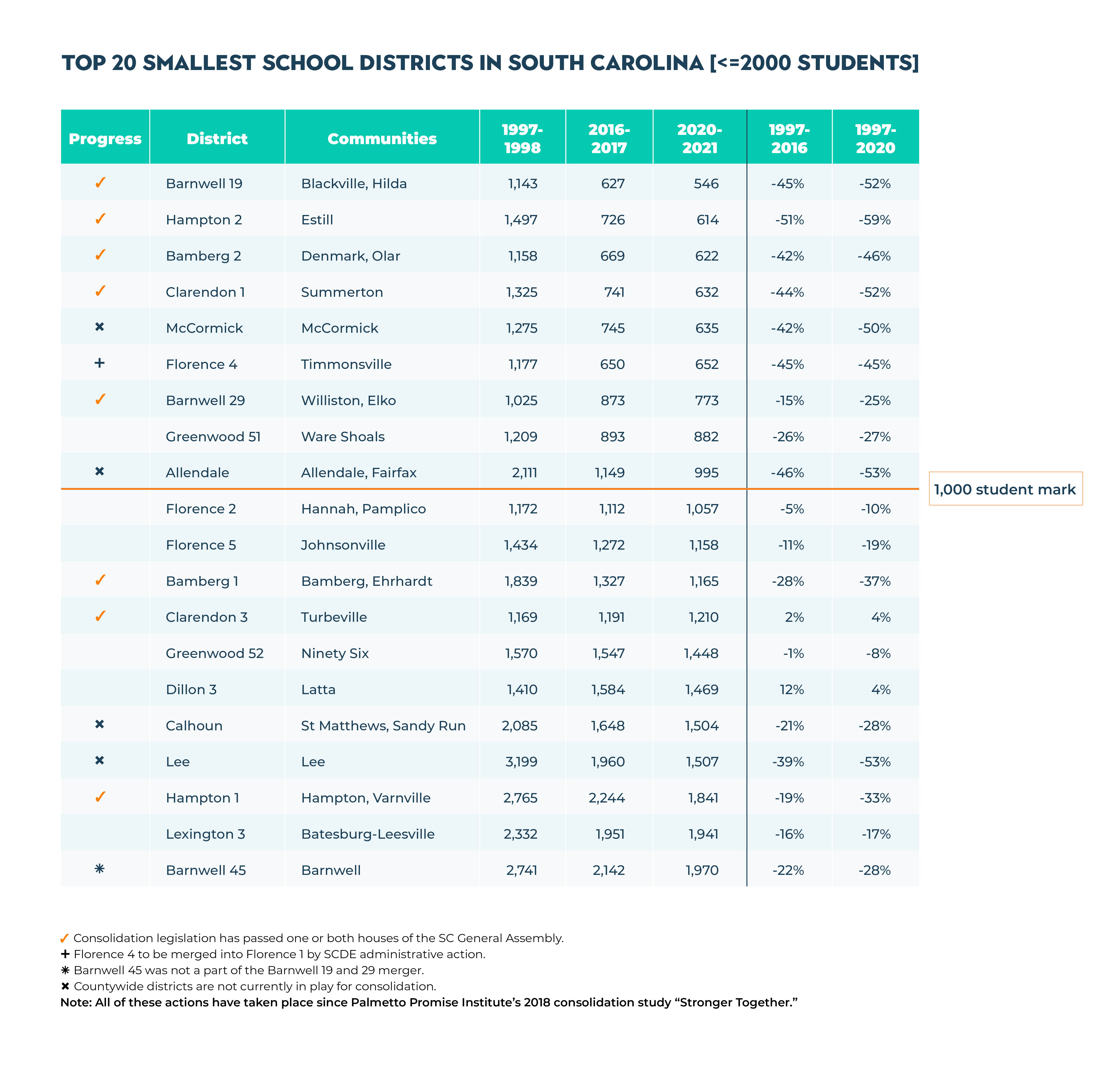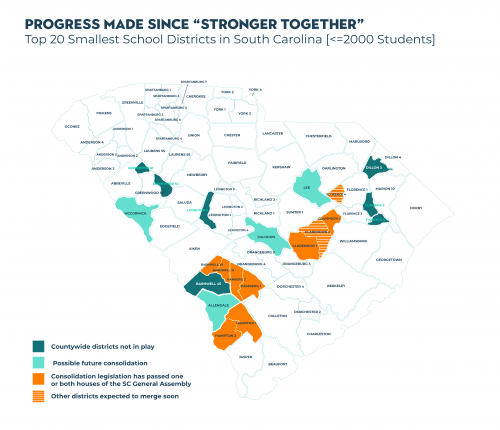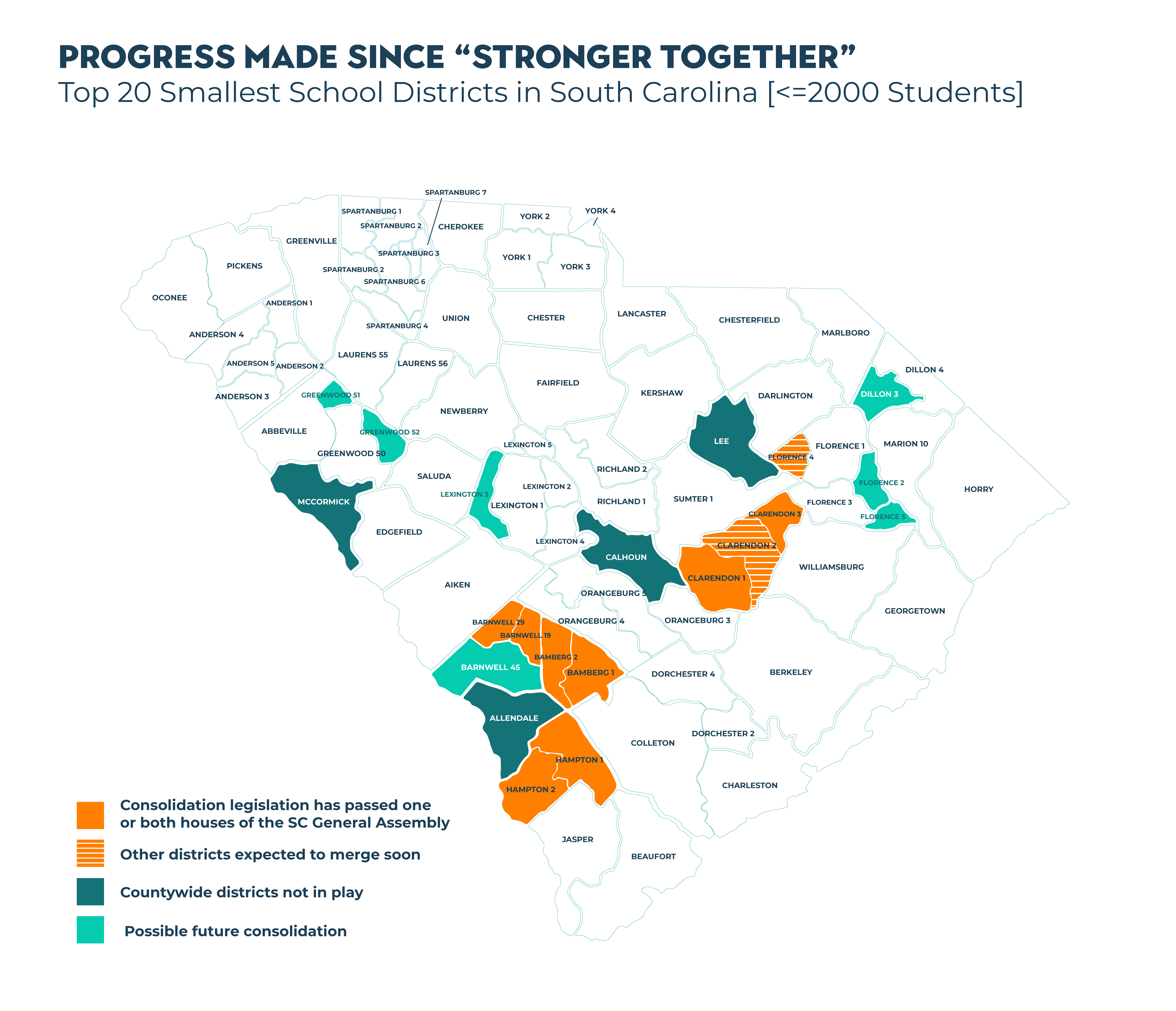Consolidating tiny shrinking school districts: A progress report
When Palmetto Promise Institute released our report Stronger Together: Expanding Opportunity Through School District Consolidation (Fall, 2018), we had no idea what kind of reception it would receive. After all, State Superintendent Molly Spearman had just lamented that “consolidation” was a word that she hesitated to even speak out loud.
She had a point. Based on our research, we were sure that blood had been spilt over consolidation in the past (South Carolina had 1,742 districts in 1940. There are 79 today.)
Stronger Together was comprehensive both statistically and historically, but there was a central theme not to be lost in the statistics. We offered it as a mantra for the General Assembly: “some school districts in South Carolina are small, some are shrinking, and some are both small and shrinking.” It seemed wise for consolidation efforts to begin with districts that met both criteria.
The key part of our report listed the Top 20 Smallest School Districts in South Carolina. Each of these districts had fewer than 2,000 students across all schools. Using the most recent figure available at the time (2016-2017), we showed that all but two of the smallest districts had shrunk since 1997-1998. One school district had shrunk 51% in only about 20 years!
So, nearly three years later, what are the trends?
First of all, an update to the research shows that of the twenty smallest districts, all but two are even smaller than the last time we checked (2016-2017)! Of the two remaining, one has nineteen more students than five years ago, and one has two more students in Average Daily Membership (ADM).
On actual consolidations, we are pleased to report progress.
After our report came out, newly-elected Governor Henry McMaster mentioned consolidation in his State of the State speech in 2019 and a number of pieces of legislation were filed in both the 2019-2020 sessions and the 2021-2022 sessions.
In the chart we provide here, the column labeled “Progress” tells the story.  Superintendent Spearman put it this way to the Education Oversight Committee earlier this week:
Superintendent Spearman put it this way to the Education Oversight Committee earlier this week:
At this point we have 11 school districts that are in the process of consolidating…I would say that’s tremendous foundational progress… I think if you don’t have the governance structure foundationally correct, you’re wasting your time and money. This is long overdue, and I’m so proud as State Superintendent to have gone from [not] having said that word “consolidation” out loud in 2014 to action having taken place….This is extraordinary improvement, and I know we’ll see the benefits of it down the road… We are making sure that we put the future needs of the community and students first, over whether or not some of the adults get angry.
Moving back to the chart, you can see there is still work to do. There is a holdout in Barnwell. Florence has 5 (soon to be 4) districts in the county. Greenwood has 3. In fact, there is also no reason that a conversation cannot take place about the feasibility of merging districts in Anderson (5), Dorchester (2), Laurens (2), Lexington (5), Richland (2), Spartanburg (7), and York (4) counties.
We said in 2018 that Orangeburg was a model worth following. That county along with Dillon, Sumter, and Marion showed the way starting about 20 years ago. We also said that: “the next legislative session with a newly-elected governor is the time to make consolidation a reality, but conversations must begin now and county legislative delegations must step up with courage.”
Turns out local delegations did step up with courage. None of this progress reflected in our chart would have taken place without the political risks legislative delegations took and continue to take. At the risk of leaving someone out, a special thanks goes to Senators Kevin Johnson, Brad Hutto, and Margie Bright Matthews. On the House side we thank Lonnie Hosey, Justin Bamberg, Shedron Williams, Cezar McKnight, and Kimberly Johnson for their brave efforts.
Stay tuned for more progress!







